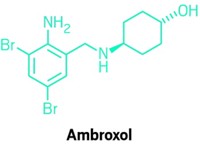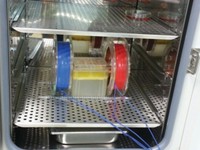Advertisement
Grab your lab coat. Let's get started
Welcome!
Welcome!
Create an account below to get 6 C&EN articles per month, receive newsletters and more - all free.
It seems this is your first time logging in online. Please enter the following information to continue.
As an ACS member you automatically get access to this site. All we need is few more details to create your reading experience.
Not you? Sign in with a different account.
Not you? Sign in with a different account.
ERROR 1
ERROR 1
ERROR 2
ERROR 2
ERROR 2
ERROR 2
ERROR 2
Password and Confirm password must match.
If you have an ACS member number, please enter it here so we can link this account to your membership. (optional)
ERROR 2
ACS values your privacy. By submitting your information, you are gaining access to C&EN and subscribing to our weekly newsletter. We use the information you provide to make your reading experience better, and we will never sell your data to third party members.
Biological Chemistry
Copying An Original
Faithful replication of a lost limb demands tight process control
by Sophie L. Rovner
August 2, 2010
| A version of this story appeared in
Volume 88, Issue 31

Maintaining the correct body plan is crucial for successful regeneration after an animal loses a limb to accident or disease.
But regeneration can’t even get started unless the animal can detect that its body is no longer whole, says biologist Michael Levin, who directs the Tufts Center for Regenerative & Developmental Biology at Tufts University. “So an organism continuously monitors its three-dimensional shape to compare what it has now to what it’s supposed to have,” he says. “That’s a necessary process to knowing that it’s been damaged.” Blood loss, injury currents produced at the wound site, and exposure of internal cells to oxygen provide the body with indications that it has been damaged, he says.
The organism also needs to figure out how to replace the missing limb in the correct location and how to match the limb’s original shape, size, and orientation. In a salamander, “if you amputate at the wrist, the cells there somehow know to give rise to a hand,” says Jeremy P. Brockes, who studies cellular and molecular mechanisms that underlie regeneration at University College London. “If you amputate at the shoulder, they’ll give an entire arm. So there is some kind of graded property running up and down the arm which determines the identity of the structures that are going to be regenerated.”
The organism also somehow determines that it needs to “build a limb and not a tail and not a bunch of spinal cord with an eye on top of it,” Levin says. “What’s remarkable is that, for organisms that regenerate, they almost always regenerate exactly what they lost—no more, no less. It’s very clear that they know exactly what shape they’re supposed to be and they know when they’ve reached it, and then they stop growing,” he adds. “We’re studying the mechanisms that underlie the storage and processing of that patterning information, that 3-D structure.”
In recent work, Levin’s team showed that it’s possible to permanently reset the target pattern to which regeneration rebuilds after injury. By interfering with the normal signals provided by the central nervous system and by plasma membrane channel proteins known as innexins, the researchers induced amputated flatworms to grow extra heads out of their sides or out of what had originally been their tail ends (Dev. Biol. 2010, 339, 188).
The same patterning information that guides regeneration is utilized during embryogenesis, when a single fertilized egg cell differentiates to form an embryo consisting of multiple cell types organized into a predefined morphology. This process is remarkably forgiving: The developing organism can tell if it has deviated from the programmed pattern and will usually initiate corrective action to get back on course, Levin says.
After birth, this careful oversight must continue in order to maintain a healthy organism. During an animal’s lifetime, its cells are constantly dying and being replaced, “and yet the organism continues in the same 3-D pattern, more or less, over decades,” Levin notes. “When cells stop obeying the morphogenetic needs of the host and revert to control at the single-cell level instead of responding to the normal pattern cues of the body,” the result is cancer, he explains. “So the body has to continuously combat that type of disorganization and try to impose order.”
Regeneration, too, is subject to checks and balances. As a result, “in a typical wound, the cells know not to sprout an extra limb,” says molecular biologist Ken Muneoka, who studies limb development and regeneration at Tulane University, in New Orleans.
Regeneration is held in check by signaling factors released by nerves, by the epidermis that covers the wound, and by the cells that aggregate to form the replacement limb, Muneoka says.
These signaling factors are controlled with finesse. For instance, cells have to deliver growth factors known as bone morphogenetic proteins (BMPs) at the right time and in the right location at a wound site. Otherwise, Muneoka says, “you’re going to get an abnormal regenerative response,” such as the growth of a toe in the wrong location or the generation of an extra finger.
Abnormal growth might also be held in check by local differences among neighboring cells, Brockes says. This model suggests that “growth stops when cells can no longer distinguish themselves from their neighbors,” for instance in terms of particular molecules expressed on the surface of the cells, he says. One possible example is Prod 1, a cell-surface protein that interacts with growth factor receptors such as the epidermal growth factor receptor.
Size control is obviously important but isn’t well understood. “A lot of work has gone into understanding how to kick-start regeneration, but almost no work has gone into learning how organisms stop it,” Levin notes. “Nobody wants to activate a regenerative response that gives you a 300-lb arm or a tumor at the end of a stump.”





Join the conversation
Contact the reporter
Submit a Letter to the Editor for publication
Engage with us on Twitter